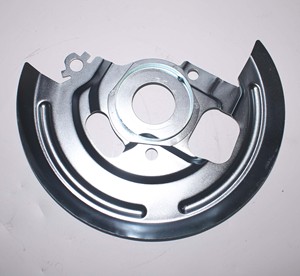(18905 products available)





























































 Ready to Ship
Ready to Ship














































































































GM car parts are the components and accessories used in constructing and maintaining vehicles made by General Motors. These car parts are accessible and affordable, making GM vehicles popular worldwide. Nonetheless, the popularity of GM car parts presents a lucrative business opportunity for retailers, wholesalers, and distributors.
There are two main categories of GM car parts:
Genuine GM parts
Genuine GM parts are the original parts manufactured by GM. They are made to fit perfectly and work seamlessly with each vehicle model. They are further divided into two categories:
GM Powertrain parts
These are parts that make up the engine and the transmission system of the vehicle. The transmission system is made up of the transmission case, bands, gears, clutches, shaft, and seals. The engine consists of the engine block, cylinder heads, valves, pistons, rings, camshaft, crankshaft, oil pan, and timing chain.
GM Service parts
Service parts are mainly used for maintenance and repair services. They help tune up, overhaul, and repair vehicles to keep them in good working condition. Common GM service parts include filters, spark plugs, gaskets, timming belt kits, brake pads, and rotors.
Aftermarket GM parts
Aftermarket GM parts are manufactured by third-party companies. They are intended to replace genuine GM parts. They are further divided into two categories:
Standard quality GM parts
Standard quality GM parts are manufactured to meet the specifications and designs of original GM parts. They may not perform or last as long as the genuine GM parts, but they are a good alternative for customers on a tight budget.
Economic GM parts
Economic GM parts are manufactured by independent companies. They are not designed to conform to GM standards. Thus, they may not fit or work seamlessly with original GM components. Economic GM parts are much cheaper than genuine and standard quality GM parts.
Understanding the specifications and maintenance of GM parts and accessories is vital for retailers and buyers.
Engine and Motor Parts:
Oil changes should be done regularly. This helps take out the used oil and add in new oil to help keep the engine lubricated. The oil and air filters need to be replaced, too. The filters catch dirt and debris so they don't enter the engine. Spark plugs should be examined and changed when necessary. They help ignite the air-fuel combination to power the motor.
Transmission Parts:
The transmission fluid should be inspected and topped off at regular intervals. It lubricates the components that shift gears. The transmission filter needs to be swapped out, too. It removes small particles from the fluid. Belt stretch should be checked for and adjusted or replaced if needed. The belt transfers power within the transmission system.
Chassis and Suspension Parts:
Regular wheel alignments are important. Misalignment can cause uneven tire wear and handling issues. The tires should also be rotated per the owner's manual schedule. This helps them wear evenly. The suspension's hydraulic fluid should be examined and refilled as needed. The fluid enables the shock absorbers and struts to work properly.
Electrical Components:
The battery terminals should be cleaned periodically to prevent corrosion build-up. Dirty terminals can cause starting problems. The battery's water level should also be checked and topped off if required, depending on the battery type. The charging and starting systems should be inspected periodically to ensure they are functioning well. These components are critical for powering the vehicle.
Body and Trim Parts:
Exterior rubber seals and mouldings should be examined for damage or cracks. Worn seals should be replaced to keep out water and air. The vehicle's paint and trim should be cleaned regularly. This helps maintain appearance and protects against rust.
Cooling Parts:
The coolant levels should be checked at intervals. Topping off is important for temperature regulation. The radiator's cap, hoses, and other components should be inspected to ensure they are not damaged.
Fuel System Parts:
The fuel filter needs to be swapped out per the recommended schedule. This prevents clogs from restricting fuel flow. The entire fuel system should be examined for leaks or issues. Any problems detected need to be fixed right away.
Air Intake Parts:
The air filter should be inspected regularly. It needs to be cleaned or replaced to ensure the engine gets enough airflow. The intake duct and other parts should also be examined for damage or wear and swapped out as required.
There's no denying that GM vehicles have a loyal following. To tap into the lucrative market, it's vital to know the ins and outs of GM car parts.
Most of the time, replacing General Motors parts isn't a very complex job. Nonetheless, it does rely upon which part of the vehicle one is wanting to supplant. In any case, here are a few general rules for supplanting GM parts:
Q1: How can one differentiate between genuine GM parts and aftermarket parts?
A1: Genuine GM parts are manufactured by GM or its authorized suppliers and are designed specifically for GM vehicles. They will have a GM logo and part number. Aftermarket parts are produced by independent companies and may not be an exact match in quality or fitment. They may not have a GM logo.
Q2: What is the warranty on GM genuine parts?
A2: The warranty period may vary depending on the type of part. Typically, there is a one-year warranty on the normal use of genuine GM parts. The company will repair or replace free of charge any part found defective in material or workmanship within the warranty period.
Q3: Can GM parts be used on other brands of vehicles?
A3: No, GM parts are designed specifically for GM vehicles. Using them on other brands' vehicles may damage the parts and cause safety issues.
Q4: Are GM car parts eco-friendly?
A4: Yes, GM car parts are eco-friendly. The company has a sustainable vision of reducing the environmental impact of its operations and products. It complies with all environmental regulations and standards to minimize emissions, waste, and the use of hazardous materials.
The keyword "gm car parts" exhibits a fluctuating web search volume trend with an average monthly web search volume of 2,900. Over the past year, the web search volume experienced a significant dip, registering a -21% change both annually and in the past three months. Notably, the data reveals a sharp peak in January 2024, where web search volume surged to 9,900 before reverting to its usual levels.
Analyzing the monthly search data for "gm car parts," we observe stability in web search volume for most months, typically hovering around 2,400 to 2,900. However, the stark increase in January 2024 stands out, suggesting a temporary surge in interest or need for these parts. Following this peak, the web search volume dropped back to previous levels, indicating that the spike was an anomaly rather than the start of a new trend.
This analysis underscores the importance of monitoring seasonal variations and unexpected peaks in web search volumes, as they can signal changes in consumer behavior or market dynamics. For stakeholders in the automotive parts industry, understanding these patterns helps in planning inventory, marketing strategies, and customer engagement initiatives.